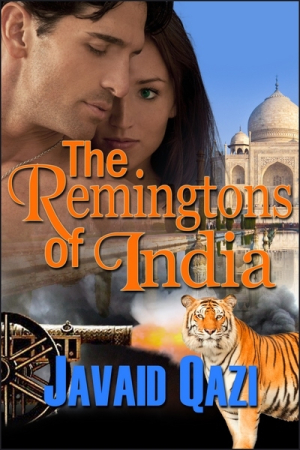The Remingtons of India
This historical romance shows how a brother and sister struggle to reconcile British and Indian culture.
The rigid ceremony and proper attitudes of turn-of-the-century England clash delightfully with the colorful and alluring landscapes of India in Javaid Qazi’s detailed narrative, The Remingtons of India. Focusing on the experiences of Katherine Remington, a Colonel’s daughter, and her brother David, a diplomatic liaison, the story traces how the Remingtons embrace life abroad.
Recently returned to Delhi after a five-year absence, Katherine is anxious to reunite with her family. She turns to volunteer work to seek refuge from the tumultuous feelings evoked by the dedicated Captain Forbes and dashing scoundrel Jason Price. Farther away in Hansi, David Remington finds himself an unwilling investigator into the circumstances surrounding the death of a compatriot, the intrigue and uncertainty made tolerable by the appearance of a mysterious local beauty. Brimming with historical action, romance, politics, and a varied cast of characters, The Remingtons of India showcases the best and worst of British India in 1899.
Lush tropical jungles, overcrowded city streets, parched deserts, mountain retreats, and exotic ancient ruins create a fascinating backdrop as the Remingtons travel throughout India to visit a variety of locales including the Taj Mahal, Peshawar, the Himalayas, and the Khyber Pass. Whether they’re traveling by steamship, railway, horse, ox-cart, or camel, trouble shadows Katherine and David as they meet head-on the challenges of riots, disease, plague, kidnapping, and more. The action is juxtaposed with the societal expectations of a marriage for Katherine and a career for David.
The book is divided into thirty chapters with alternating points of view, the majority allotted to Katherine and David, with a few dedicated to Captain Forbes, Jason Price, and Katherine’s friend Tara Tompkins, a former convent schoolmate and erstwhile nanny. Qazi includes a wide range of personalities from multiple stratas of Indian and British society. Steadfast and honorable Forbes is the perfect foil for Price’s listless playboy antipathy, and Katherine’s nobleness contrasts sharply with her flighty sister Lily and other society ladies on the marriage market. Family, friends, merchants, acquaintances, villains, nuns, monks, soldiers, beggars, orphans, and a young Rudyard Kipling make up a well-rounded company of players as the drama unfolds.
Indian flora, fauna, and vocabulary are liberally sprinkled throughout, adding to the authenticity of events. However, a more consistent approach to spelling, capitalization, and italicization would be preferable. For example, the honorific memsahib, used in colonial India to address European women, is seen as “memsahib,” “memsahib,” “Mem sahib,” “Mem Sahib,” and so on. Likewise, “The Maharaja” appears also as “The maharajah” as well as other variations. While the irregularities are not limited solely to Indian terminology, it is where they are most prominent.
The Remingtons of India, rich with history, geography, and Indian culture, offers an intriguing alternative for fans of regency romance and historical fiction who enjoy the social graces and functions of the era with a bit more substance than the usual “gossip, cards, and housie-housie.”
Reviewed by
Pallas Gates McCorquodale
Disclosure: This article is not an endorsement, but a review. The publisher of this book provided free copies of the book and paid a small fee to have their book reviewed by a professional reviewer. Foreword Reviews and Clarion Reviews make no guarantee that the publisher will receive a positive review. Foreword Magazine, Inc. is disclosing this in accordance with the Federal Trade Commission’s 16 CFR, Part 255.

